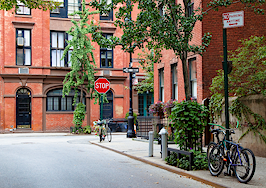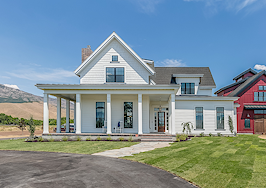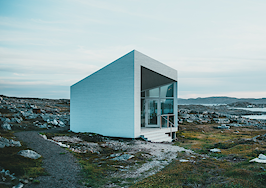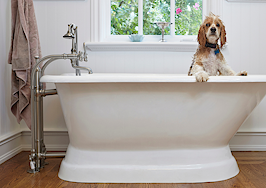The informed real estate agent with an educated eye will be able to assess the vintage of a house simply by its facade and exterior presentation before entering. Buyers and sellers are impressed by agents who are fluent in periods, styles and details of houses, and this knowledge will gain your client’s confidence.
While simple detail such as a window, front door, exterior light fixture or roofline can supply clues to the age and style of a house, nothing provides more clues upon entering the house than the kitchen and bathrooms.
The most used and most renovated rooms in a house are the kitchen — often called the heart of the home — and the bath. The size and location of these rooms, and in the case of bathrooms, the number and type, will provide immediate clues to the age of the house without having to research housing records.
Of course, a trip to the basement to investigate any exposed plumbing will provide information as well. The informed Realtor knows that older houses have been improved and updated over time and will see a combination of older cast iron pipes, copper piping and newer PVC pipes.
Stylistically, the kitchens and baths of 1910 had not evolved much from the 1900s. In this post-Victorian era, the lifestyle included multiple generations of a family living in the same house, servants and formal dining, which required well-planned kitchens and functional butler’s pantries.
Cold storage for perishable food was in unheated pantry closets and the ice box. Ice was still being delivered weekly in most homes, as electric refrigerators were not invented until 1913. Mass production of refrigerators with self-contained compressors began in 1918.
Gas stoves and large porcelain sinks completed the modern kitchen of 1910.
It is unlikely that any houses real estate agents will encounter today will have intact kitchens from this period unless they are historical recreations, but original cabinetry with glass front doors and lower counter heights can still be found in some houses.
Kitchens in 1910 always had windows, as ventilation was a requirement, and doors to back porches and yards in which wells and pumps for water, clotheslines and vegetable gardens were a given. In some country houses, back porches were used as chicken coops.
When encountering these “add-on” rooms, be aware that they are often not as structurally sound as the rest of the house. Inspections are always advised for older houses.
None of the decorative aspects of kitchens so common today were seen in kitchens of 1910. Function and efficiency were the primary concerns of the homeowner and cook.
Sanitary conditions were valued, making white the color of most kitchens, except for the massive black stove, whether coal or, later, gas. Fashionable colors, patterned tiles, and surface finishes came much later.
Indoor bathrooms, while more commonplace in 1910, were still considered a luxury. Urban and suburban areas with modern plumbing and sanitary water supply obviously had the advantage over farmhouses and rural locations for bathroom locations within a house in 1910.
First-floor half baths in homes of this vintage may be very small for the use of servants or as recent upgrades. Checking permits and plumbing for any bathroom renovations is definitely in order.
Arguably the most important invention of the twentieth century was the modern flush toilet. In houses of this vintage, it is common to find a random toilet in the basement or cellar, which was located at the lowest point in the house to prevent backup of sewage.
In 1910 the modern siphonic flush-type toilet became standard. The elevated tank toilet, with the wall-mounted tank high above the commode and activated by a pull chain, which relied on gravity to flush waste, began to be replaced.
If you encounter one of these old toilets with a tank mounted on the wall near the ceiling, proceed with caution, as it is now more than 100 years old.
Clawfoot tubs were still in use in 1910, and modern adaptations have come back into style. Showers were less common but can still be found and were “cage-style,” with water spraying from rings of horizontal pipes instead of a shower head from above. These are also known as “needle showers.”
Modern germ theory was widely accepted in the 1910s, and cleanliness was valued to prevent disease. As a result, the all-white bathroom, with black and white hexagonal or square floor tiles, emphasized and reinforced the need for sanitary conditions in the bathroom.
White rectangular tiles, first used in subway construction in New York City in 1904, provided a sense of brightness and cleanliness while underground. This mass-produced tile, which is again seen as stylish more than 100 years later, was used extensively in bathrooms of this era.
The kitchens and bathrooms of 1910 were well planned and functional. Older houses will probably have been upgraded and remodeled, but the footprint of the original will still be in evidence. The real estate agent who can trace the evolution of these two important rooms from the turn of the century to the present has an advantage when selling homes today.
Gerard Splendore is a licensed associate real estate broker with Warburg Realty in New York. Connect with him on LinkedIn.













